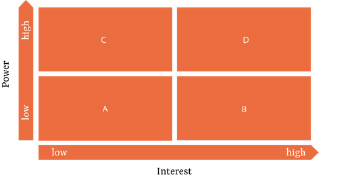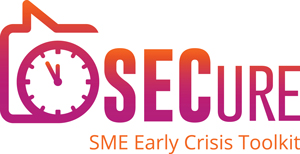The term “stakeholder” is used to describe any person or organization that has a vested interest in your organization. There are many stakeholders for an organization including employees, customers, suppliers, investors, etc. Organizations must manage these stakeholders in order to achieve their goals.
Stakeholder management is the process of maintaining good relationships with the stakeholders who have the greatest impact on your goals. Communicating with them in the right way can be critical to keeping them “on board.”
This article introduces stakeholder identification and stakeholder management.
What is stakeholder management and how does it affect organizations?
Stakeholders are individuals or entities or organizations that have an interest in your organization, such as employees, customers, suppliers or investors.
Stakeholder management can then be defined as the process of identifying and analyzing the interests of key groups (stakeholders) affected by a company’s activities in order to engage them in achieving the company’s goals through targeted influence.
An example of this would be if your company is having a new manufacturing facility built. You could then hold meetings with employees, community leaders and local residents to find out what issues/concerns they have.
How to identify your company’s relevant stakeholders.
Stakeholder analysis is about identifying all stakeholders who have an interest in your company and its operations at some level. This analysis should provide insight into what interests and drives each stakeholder.
In 2004, Harrison and Freeman introduced the concept of stakeholder mapping, which they updated in 2008 to include the following stakeholder groups:
Primary stakeholders
- Employees
- Customers
- Funders
- Suppliers
- Communities
Secondary Stakeholders
- Government
- Media
- Consumer advocates
- Competitors
- Special interest groups
Stakeholder mapping
To maximize the value of these stakeholders, organizations should map the different types of stakeholders and their respective importance to the organization. A stakeholder map is a document that lists the various stakeholders and their impact on organizational performance. The map helps managers understand how best to engage with different stakeholders and what tradeoffs they are willing to make.
So the first important step in effective stakeholder management is to identify all the different types of stakeholders in the organization.
The next step is to determine the relative importance of each stakeholder group in the context of the organization. For this purpose, sales figures or market shares for different markets can be used as benchmarks for determining relative importance.
Identifying the different types of stakeholders alone will not help an organization if it does not have good relationships with them. This means that organizations should try to obtain as much information as possible about each stakeholder group. For other stakeholder groups that are not relevant to the organization, an organization may decide to simply ignore them or just observe them. If the stakeholder is important, the respondent should look for ways to better interact with that group.
Power Interest Grid
There are several frameworks for stakeholder management. One of the most popular is the so-called Power-Interest Grid.
The power-interest grid consists of four quadrants that are used to represent the different levels of influence and interest in a particular issue:
- The upper left quadrant (C) represents those with the most power, such as the top management of an organization, but who show little interest in a particular issue.
- The upper right quadrant (D) represents people with great influence and interest, such as investors
- The lower left quadrant (A) represents people with low interest and low influence – for example, smaller suppliers
- The lower right quadrant (B) represents people who show a high level of interest but have little influence – for example, individual employees

After identifying stakeholders, an organization must develop and communicate a strategy for interacting with them. This strategy should be aligned with the Power-Interest Grid:
- High power, high interest (D): These are your most important stakeholders, and you should prioritize making sure they are satisfied with the progress of your project.
- High Power, Low Interest (C): Because of their influence in the company, you should strive to keep these individuals satisfied. However, since they haven’t shown much interest in your project, you may scare them away if you communicate with them too much.
- Low power, high interest (B): You should keep these individuals in the loop and check in with them regularly to make sure they are not having problems with the project.
- Low power, low interest (A): Just keep these people informed on a regular basis, but don’t overdo it.
Once you have created a list of which stakeholders fall into which category, it is time to think strategically about how best to secure ongoing support from each of these stakeholder types. First, ask yourself questions about your stakeholders, such as: What motivates this stakeholder?
What other priorities do they have, and how can we align our project with those priorities (or at least ensure that the project does not compromise them)?
Is this stakeholder likely to be favourably disposed toward our project? If not, what can we do about it?
Once you have created these profiles for each stakeholder type, you can move on to the next phase of the stakeholder management process – developing your stakeholder communication plan.
All information and details in our articles and information have been compiled to the best of our knowledge. However, they are provided without liability. This information cannot replace individual advice in specific cases.
Link to the german version: https://thevisionworks.de/einfuehrung-in-das-stakeholdermanagement





